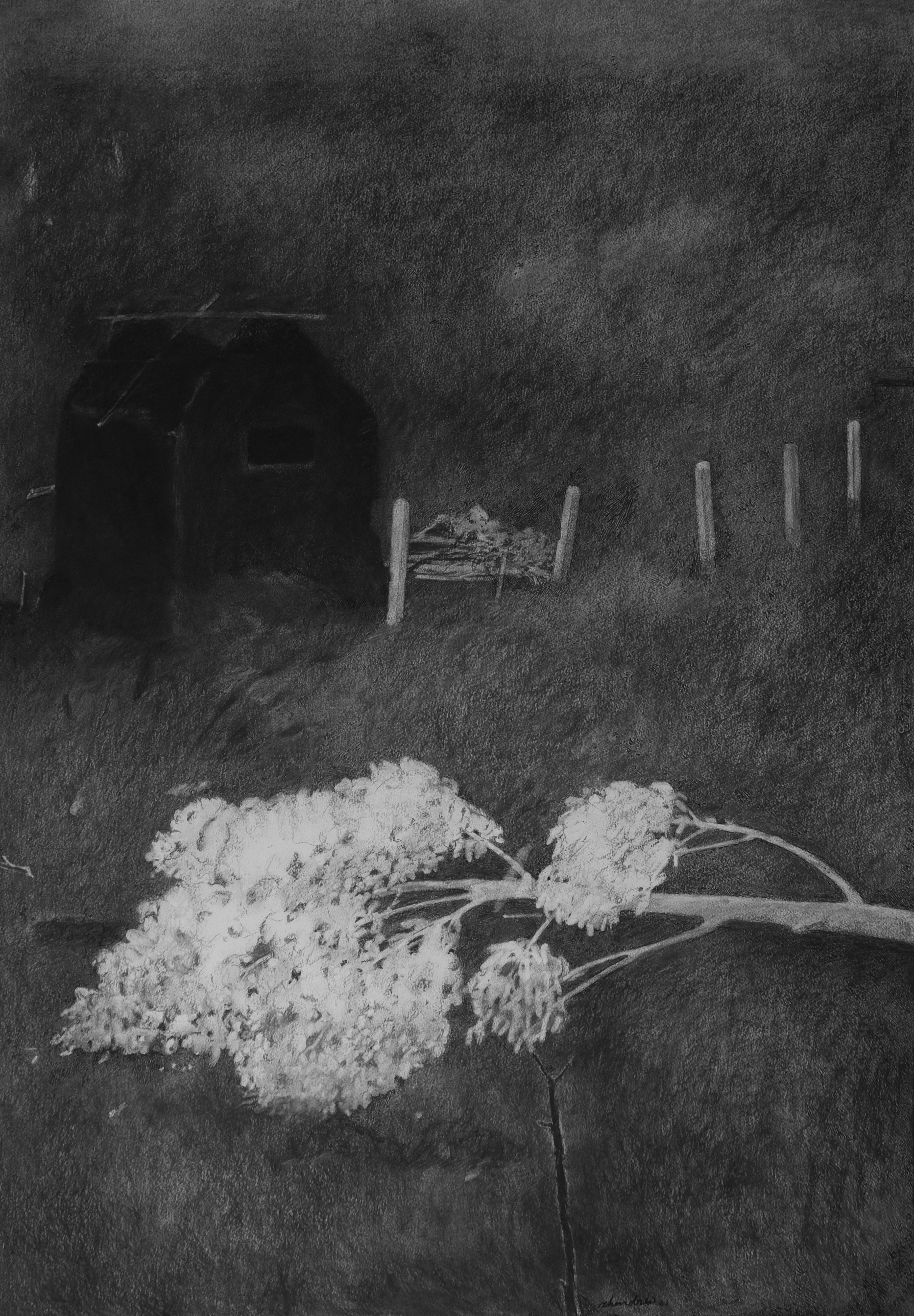There are few artists in India who are not acquainted with Santiniketan, which is of course synonymous with Rabindranath Tagore. It was Rabindranath who had broken the typical stylisation of Indian landscape painting, and given it a new dimension. Ignored and even vilified earlier, the world is now giving his paintings their rightful due. Not just Rabindranath, but Gaganendranath Tagore, Nandalal Bose, Ramandranath Charkarvorty, Ramkinkar Baij and Binodebehari Mukherjee have also left behind their signature articulations of the red earth world of Santiniketan.
Over the years, Chandra has tried to capture and interpret his own understanding of Santiniketan, first with the help of his camera lenses, then onto his charcoal sticks and brushes. He has repeatedly returned to his home in Kolkata with the concept of Santiniketan, frozen in his high-resolution frames, dominating his mind. Examining and re-examining his images over time, he found his extremely personal, and sadly a shattering testimony, of change before his eyes -- of Santiniketan moving away from the near-utopia of the earlier masterpieces. Of asphalt and barbed wires visibly cementing the loose red soil ecosystem, eroding its resilient foliage. The visible mutilation is only an allegory of the insidious undercurrents that now roil the ‘abode of peace.’
- Jyotirmoy Bhattacharya








